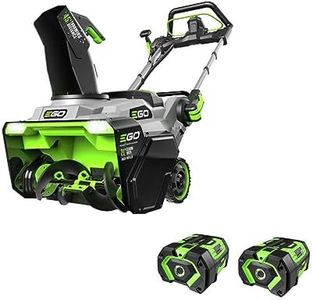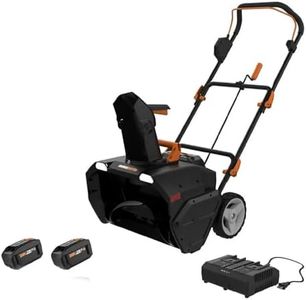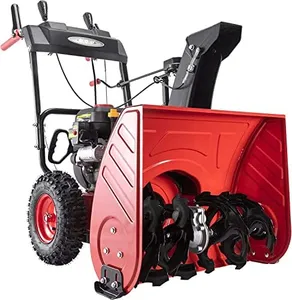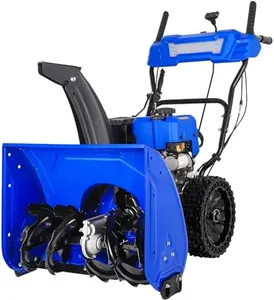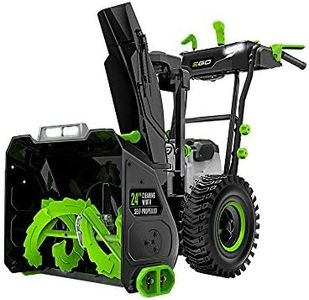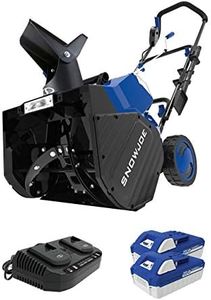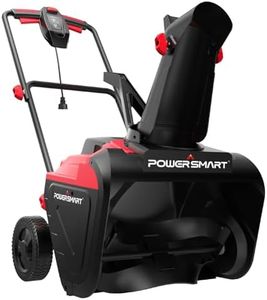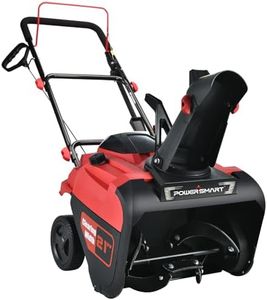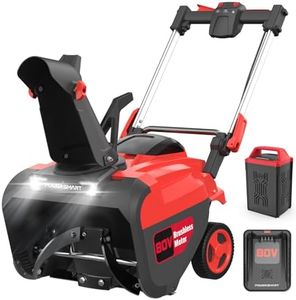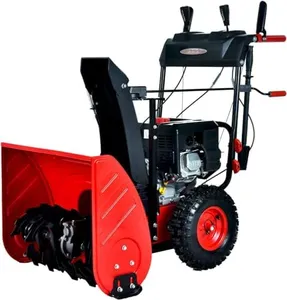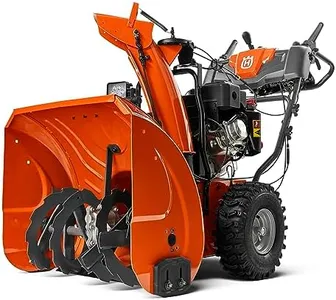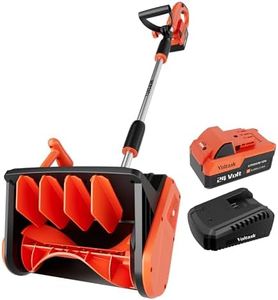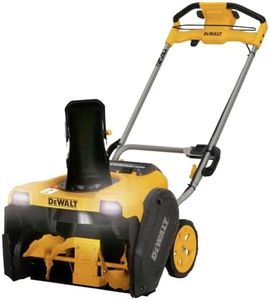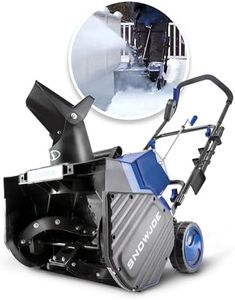We Use CookiesWe use cookies to enhance the security, performance,
functionality and for analytical and promotional activities. By continuing to browse this site you
are agreeing to our privacy policy
10 Best Single Stage Snow Blowers 2025 in the United States
How do we rank products for you?
Our technology thoroughly searches through the online shopping world, reviewing hundreds of sites. We then process and analyze this information, updating in real-time to bring you the latest top-rated products. This way, you always get the best and most current options available.

Buying Guide for the Best Single Stage Snow Blowers
Choosing the right single-stage snow blower can make a big difference in how efficiently and comfortably you can clear snow from your driveway, sidewalk, or other areas. Single-stage snow blowers are generally lighter and easier to maneuver than their two-stage counterparts, making them ideal for smaller areas and lighter snowfall. To make the best choice, you need to understand the key specifications and how they relate to your specific needs.Clearing WidthThe clearing width of a snow blower refers to the width of the path it can clear in a single pass. This is important because a wider clearing width means you can clear a larger area more quickly. Clearing widths for single-stage snow blowers typically range from 18 to 22 inches. If you have a small driveway or walkway, a narrower width may be sufficient. For larger areas, a wider clearing width will save you time and effort.
Intake HeightThe intake height is the maximum height of snow that the snow blower can handle. This is crucial for determining how well the machine will perform in different snow conditions. Single-stage snow blowers usually have an intake height of around 12 inches. If you live in an area that gets light to moderate snowfall, a standard intake height will be adequate. However, if you frequently experience heavy snowfall, you might need a model with a higher intake height to ensure efficient clearing.
Engine PowerEngine power, measured in cubic centimeters (cc), determines how effectively the snow blower can handle heavy, wet snow. More powerful engines can throw snow farther and handle tougher conditions. Single-stage snow blowers typically have engines ranging from 100cc to 200cc. If you have a small area with light, fluffy snow, a lower-powered engine will suffice. For larger areas or heavier, wetter snow, a higher-powered engine will provide better performance.
Throw DistanceThrow distance indicates how far the snow blower can throw the cleared snow. This is important for ensuring that the snow is moved far enough away from the cleared area. Single-stage snow blowers usually have a throw distance of 15 to 30 feet. If you have a small area to clear, a shorter throw distance may be adequate. For larger areas, or if you need to throw snow over obstacles, a longer throw distance will be more beneficial.
Weight and ManeuverabilityThe weight of the snow blower affects how easy it is to maneuver and transport. Single-stage snow blowers are generally lighter than two-stage models, making them easier to handle. Weights typically range from 50 to 100 pounds. If you need to carry the snow blower up and down stairs or over uneven terrain, a lighter model will be easier to manage. For flat, open areas, weight is less of a concern, but a lighter machine will still be easier to maneuver.
Electric StartAn electric start feature allows you to start the snow blower with the push of a button, rather than pulling a cord. This can be especially useful in cold weather when engines can be harder to start. If you prefer convenience and ease of use, look for a model with an electric start. However, if you don't mind a bit of extra effort, a manual start model can be just as effective.
Most Popular Categories Right Now
